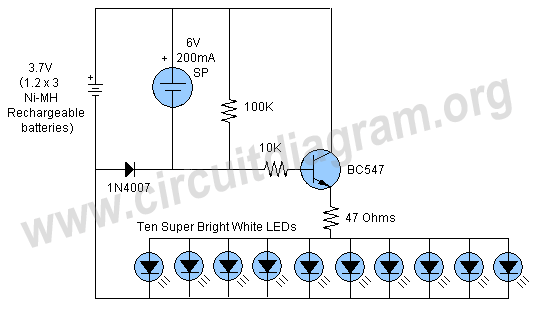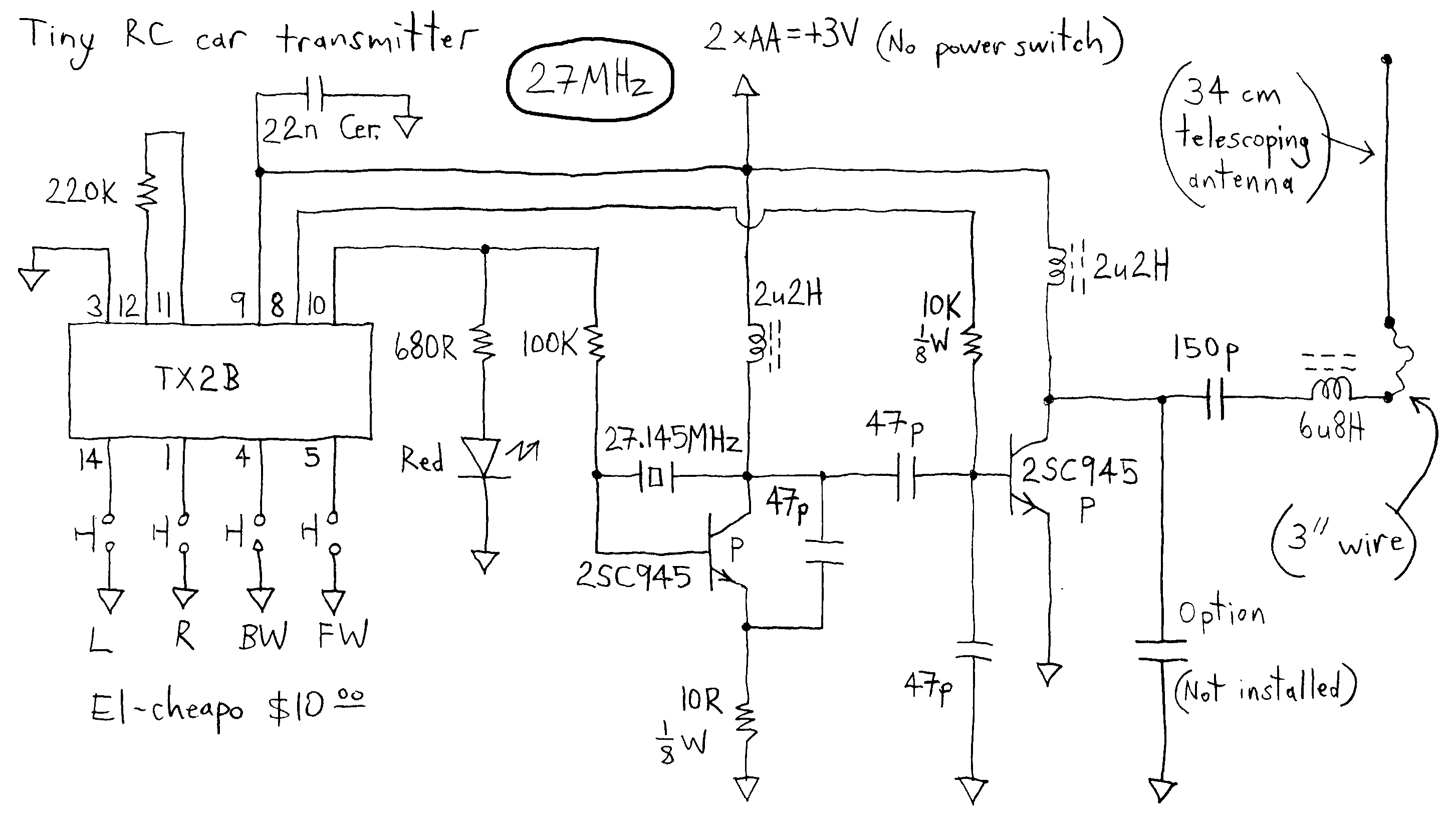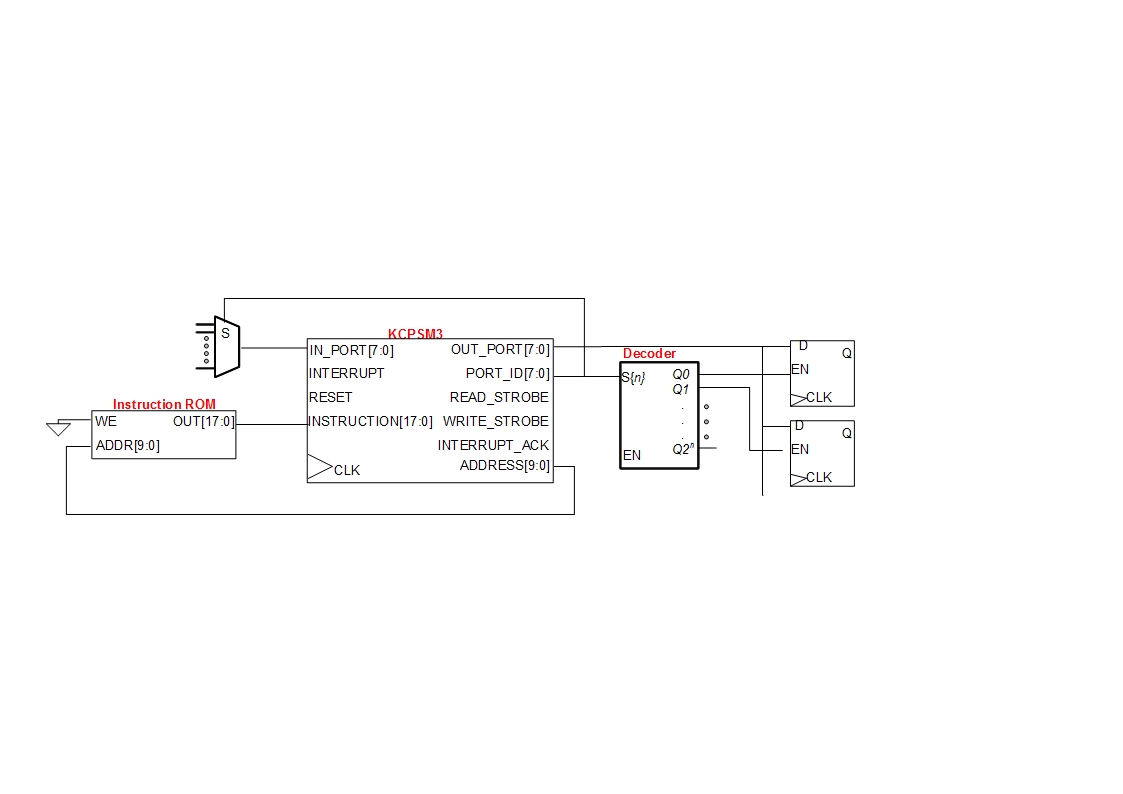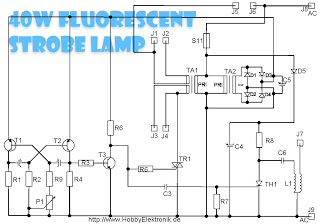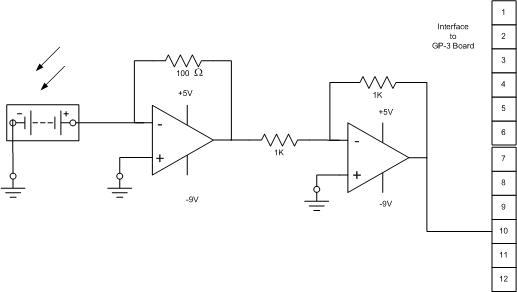
solar charger schematics
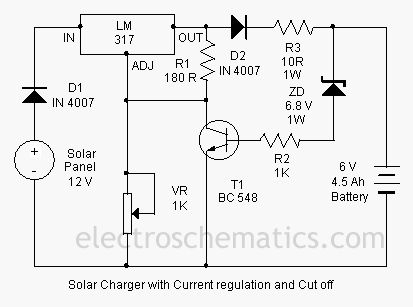
This is a solar charger circuit designed to charge Lead Acid or Ni-Cd batteries utilizing solar energy. The circuit captures solar energy to charge a 6-volt, 4.5 Ah rechargeable battery for various applications. It includes voltage and current regulation, as well as over-voltage cutoff features.
The solar charger circuit operates by converting solar energy into electrical energy, which is then used to charge the specified battery types. The primary components of this circuit include a solar panel, a charge controller, and the battery itself.
The solar panel generates electricity when exposed to sunlight, producing a voltage output that varies with the intensity of the sunlight. This output is typically in the range of 12 to 18 volts, depending on the panel specifications. The charge controller is a critical component that regulates the voltage and current delivered to the battery. It ensures that the battery is charged efficiently without exceeding its voltage limits, which could lead to damage or reduced lifespan.
The circuit features a voltage regulation mechanism that maintains the output voltage within safe limits for the battery being charged. This is achieved through the use of linear regulators or switching regulators, which adjust the voltage according to the battery's state of charge. Additionally, current regulation is implemented to prevent excessive current flow into the battery, which could also lead to overheating or other forms of damage.
An essential safety feature of the circuit is the over-voltage cutoff. This mechanism disconnects the solar panel from the battery when the voltage exceeds a predetermined threshold, thereby protecting the battery from overcharging. This is typically accomplished using a relay or a transistor that is controlled by a voltage sensing circuit.
In summary, this solar charger circuit is an efficient and safe solution for charging Lead Acid or Ni-Cd batteries using renewable solar energy. Its built-in regulation and safety features ensure reliable performance and longevity of the battery being charged, making it suitable for a variety of applications such as powering small electronic devices, garden lights, or backup power systems.Here is a solar charger circuit to charge Lead Acid or Ni-Cd batteries using solar energy. The circuit harvests solar energy to charge a 6 volt 4. 5 Ah rechargeable battery for various applications. The charger has Voltage and Current regulation and Over voltage cut off facilities. 🔗 External reference
The solar charger circuit operates by converting solar energy into electrical energy, which is then used to charge the specified battery types. The primary components of this circuit include a solar panel, a charge controller, and the battery itself.
The solar panel generates electricity when exposed to sunlight, producing a voltage output that varies with the intensity of the sunlight. This output is typically in the range of 12 to 18 volts, depending on the panel specifications. The charge controller is a critical component that regulates the voltage and current delivered to the battery. It ensures that the battery is charged efficiently without exceeding its voltage limits, which could lead to damage or reduced lifespan.
The circuit features a voltage regulation mechanism that maintains the output voltage within safe limits for the battery being charged. This is achieved through the use of linear regulators or switching regulators, which adjust the voltage according to the battery's state of charge. Additionally, current regulation is implemented to prevent excessive current flow into the battery, which could also lead to overheating or other forms of damage.
An essential safety feature of the circuit is the over-voltage cutoff. This mechanism disconnects the solar panel from the battery when the voltage exceeds a predetermined threshold, thereby protecting the battery from overcharging. This is typically accomplished using a relay or a transistor that is controlled by a voltage sensing circuit.
In summary, this solar charger circuit is an efficient and safe solution for charging Lead Acid or Ni-Cd batteries using renewable solar energy. Its built-in regulation and safety features ensure reliable performance and longevity of the battery being charged, making it suitable for a variety of applications such as powering small electronic devices, garden lights, or backup power systems.Here is a solar charger circuit to charge Lead Acid or Ni-Cd batteries using solar energy. The circuit harvests solar energy to charge a 6 volt 4. 5 Ah rechargeable battery for various applications. The charger has Voltage and Current regulation and Over voltage cut off facilities. 🔗 External reference

